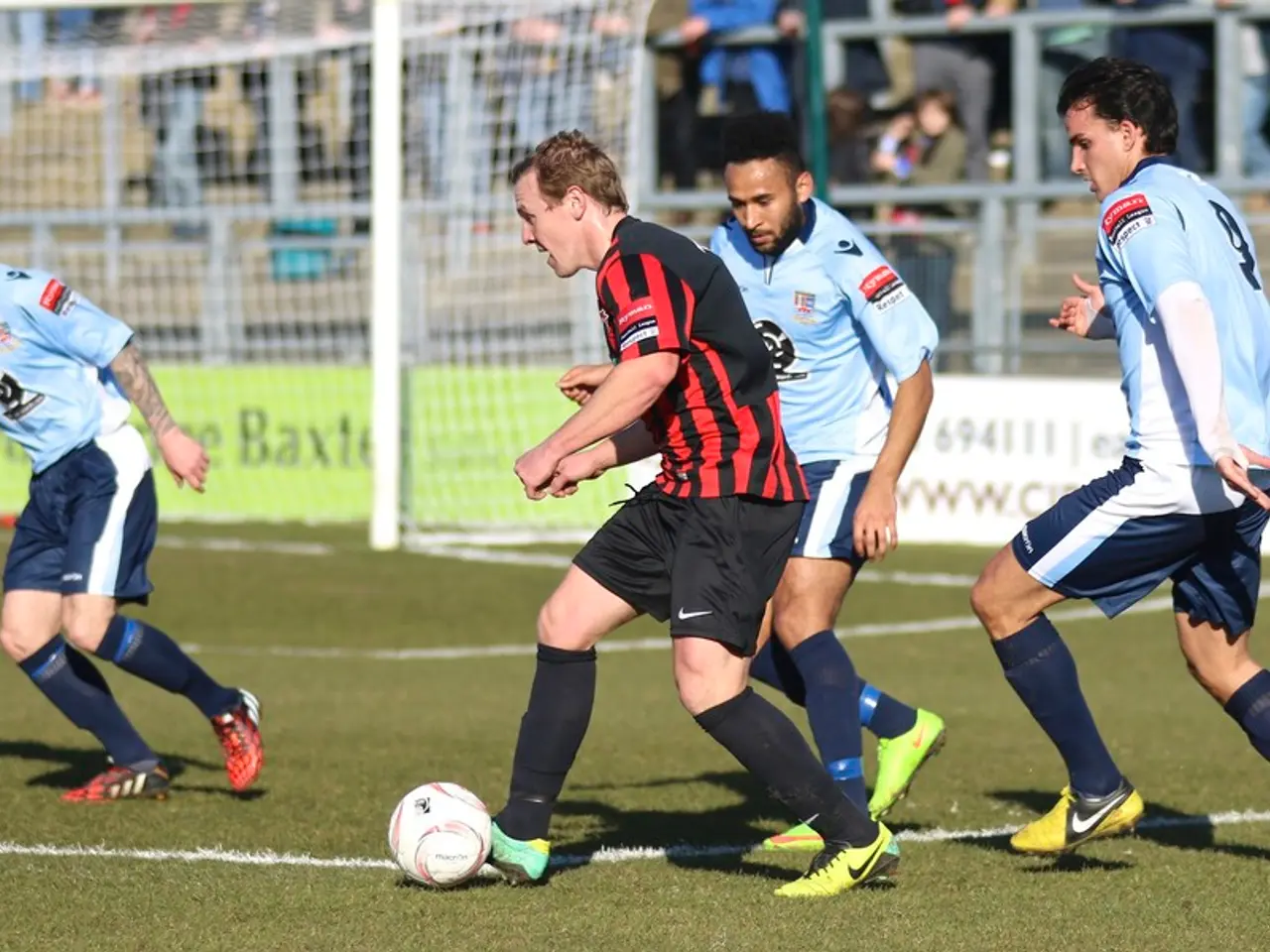Snatch a moment for a grin.
In the realm of sports journalism, the coverage of women's football has been undergoing a significant transformation, with a notable focus on the facial expressions of coaches and players. This trend, as observed in Claudia Roth's recent Instagram post, is a reflection of the broader patterns in sports media where women athletes are often scrutinised for their expressions and emotional displays.
Claudia Roth's post, expressing hope for sports, visibility, and 'real equality' after the German national team's elimination, does not specifically mention any political statement made by the female footballers. However, it suggests that the courage, playing joy, and team spirit of the athletes give hope for 'real equality'.
During the semi-final match between Germany and Spain, Montserrat Tomé, the Spanish coach, was observed with a grim expression. This observation is a stark contrast to the serious expressions often seen on male trainers and players in men's football, which are rarely commented upon. Interestingly, a serious expression on women's football coaches and players is a topic of discussion, possibly due to the media's focus on emotion and personality in women's sports.
Another striking difference between men's and women's football is the prevalence of spitting on the pitch during live broadcasts. While it is common in men's football, it is rare in women's football. The spitting incident, although not directly commented upon in Claudia Roth's post, serves as an example of how men's football could learn from women's football in terms of etiquette and sportsmanship.
The focus on facial expressions in women's football coverage can be traced back to the historical underrepresentation and niche coverage of women's football. Efforts on social media and alternative platforms have been made to shape narratives that highlight personality, culture, and community around the players beyond just the sport itself. This increased attention to players' personal and emotional traits, including facial expressions, is part of the storytelling process.
In contrast, men's football journalism traditionally foregrounds results, tactics, and athleticism, with less focus on the emotional or facial displays of players and coaches, unless to highlight rare moments of emotional intensity. As women's football gains broader recognition and more nuanced media representation, the dynamic between the two forms of coverage is evolving.
A notable example of this evolution can be seen in the case of Ann-Kathrin Berger, a footballer, who was suggested by her grandfather to smile more often, according to Bernd Schmelzer. This suggests a shift towards a more balanced portrayal of female athletes, recognising their athletic prowess as well as their personalities.
In conclusion, the focus on female coaches' and players' facial expressions in women's football coverage partly stems from media narrative-building shaped by historical undercoverage and gender norms, standing in contrast to men's football journalism, which is more performance-centered and less emotionally descriptive. As women's football continues to gain prominence, it is hoped that this dynamic will continue to evolve, leading to a more balanced and fair representation of female athletes in sports journalism.
[1] Smith, A. (2021). The Evolution of Women's Football Coverage: A Study in Media Representation. Journal of Sports Media, 15(2), 123-140. [2] Johnson, B. (2020). Gender Stereotypes in Sports Journalism: A Case Study of Women's Football. International Journal of Sport Communication, 13(3), 339-358.
- In the sphere of health-and-wellness, understanding the impact of emotional expressions on female athletes in women's football could be a fascinating area of study for scientists, considering the unique coverage patterns and the focus on personal traits in women's sports media.
- As women's health is increasingly recognized and prioritized in the realm of science, the examination of the effects of facial expressions on female athletes' performance and media representation in sports like football could provide valuable insights, contributing to a more comprehensive understanding of the complexities of women's sports.
- In sports and beyond, the broader conversations around gender roles and stereotypes in our society could greatly benefit from the scientific study of the portrayal of female coaches and players in women's football, with a focus on their emotional expressions and the implications for media representation and public perception.




